Grilles are so crucial to automotive design, for creating an identity for a car’s “face,” that I sometimes think they become sort of a crutch. Now, don’t get me wrong: there are some incredible grille designs out there, and they can do so much to define the look of a car, but what really impresses me is when designers choose to forego this hugely significant element of car design.
Let me be specific here: this is only relevant for front-engined cars, usually liquid-cooled. There are plenty of grille-less designs for rear-engined cars, but I want to focus on those cars that are otherwise conventional mechanically – front-engine, radiators, the whole deal – but whose designers have deliberately decided to shun conventional grilles and instead try something bold and different.
So, this morning, let’s take a look at three grille-less designs and see what we think! Maybe celebrate a few of these daring designs. Before we do that, though, I think we need to establish some criteria.
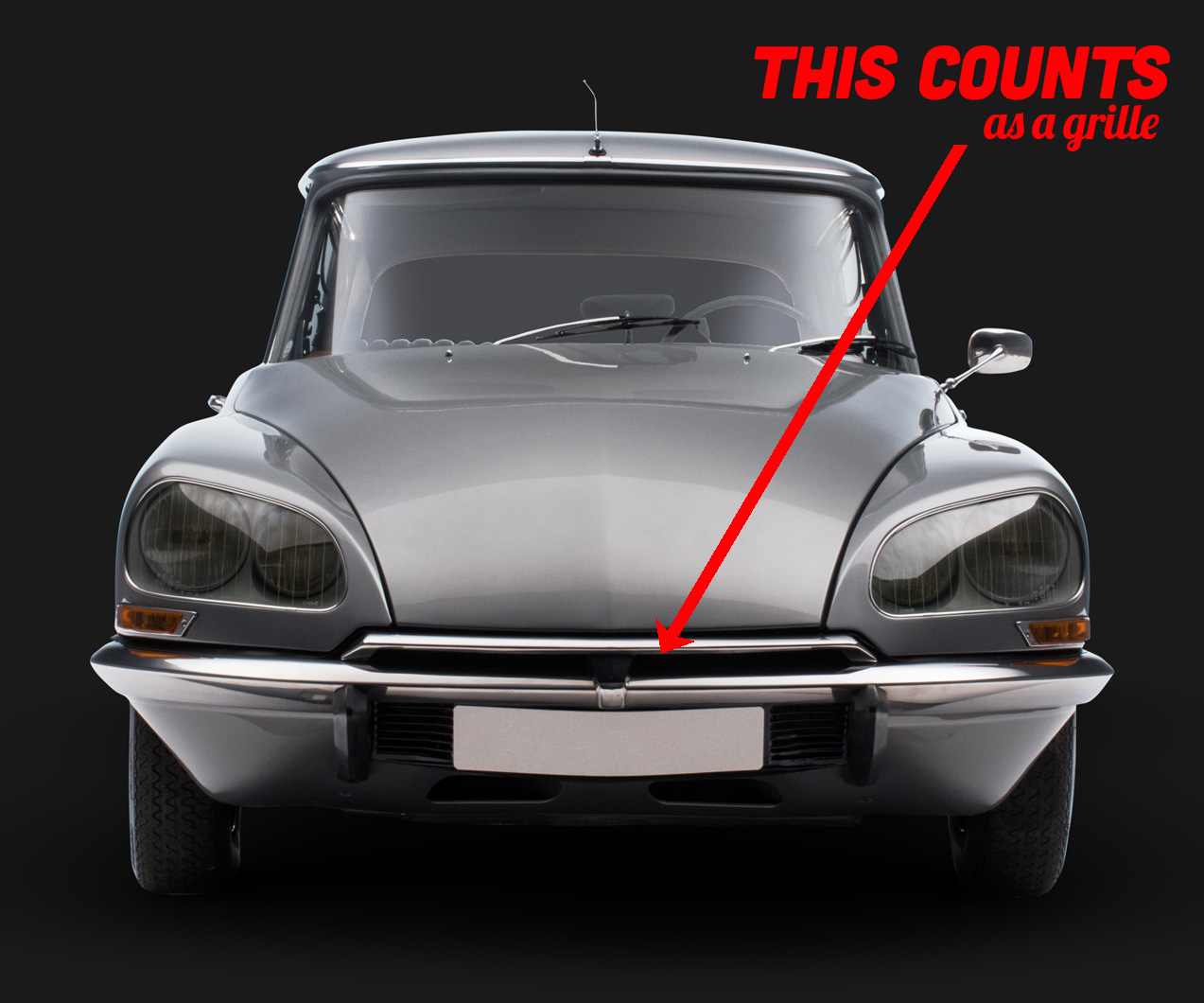
So, for our purposes, a grille-less design is one that has no trace of a grille above the front bumper. Below the bumper, fine. But nothing above. That’s why the Citroën DS doesn’t count – its above-bumper grille is pretty minimal, but it’s there.
A trickier situation is the first-generation Ford Taurus:

It doesn’t really have a grille, but it does have a sort of intake around the Ford badge that’s almost a tiny grille. I’m honestly kind of conflicted with this one – I still think it’s a grille-less design, but if I want to be a real hard-ass, I may say that while a cleverly-designed badge can admit air, no intakes outside of the badge area are allowed.
Maybe. Like I said, I’m not totally decided here.
Also, I don’t count cars that have no grille but have made the strange decision to add a fake grille instead, like my old Reliant Scimitar:

See that grille on the front? It’s fake. There’s fiberglass behind it. It could not exist and the car would be just fine.
So, we’re going to look at cars that have zero grille above the grille, and no attempt to make a fake grille. Sound good? Here we go!
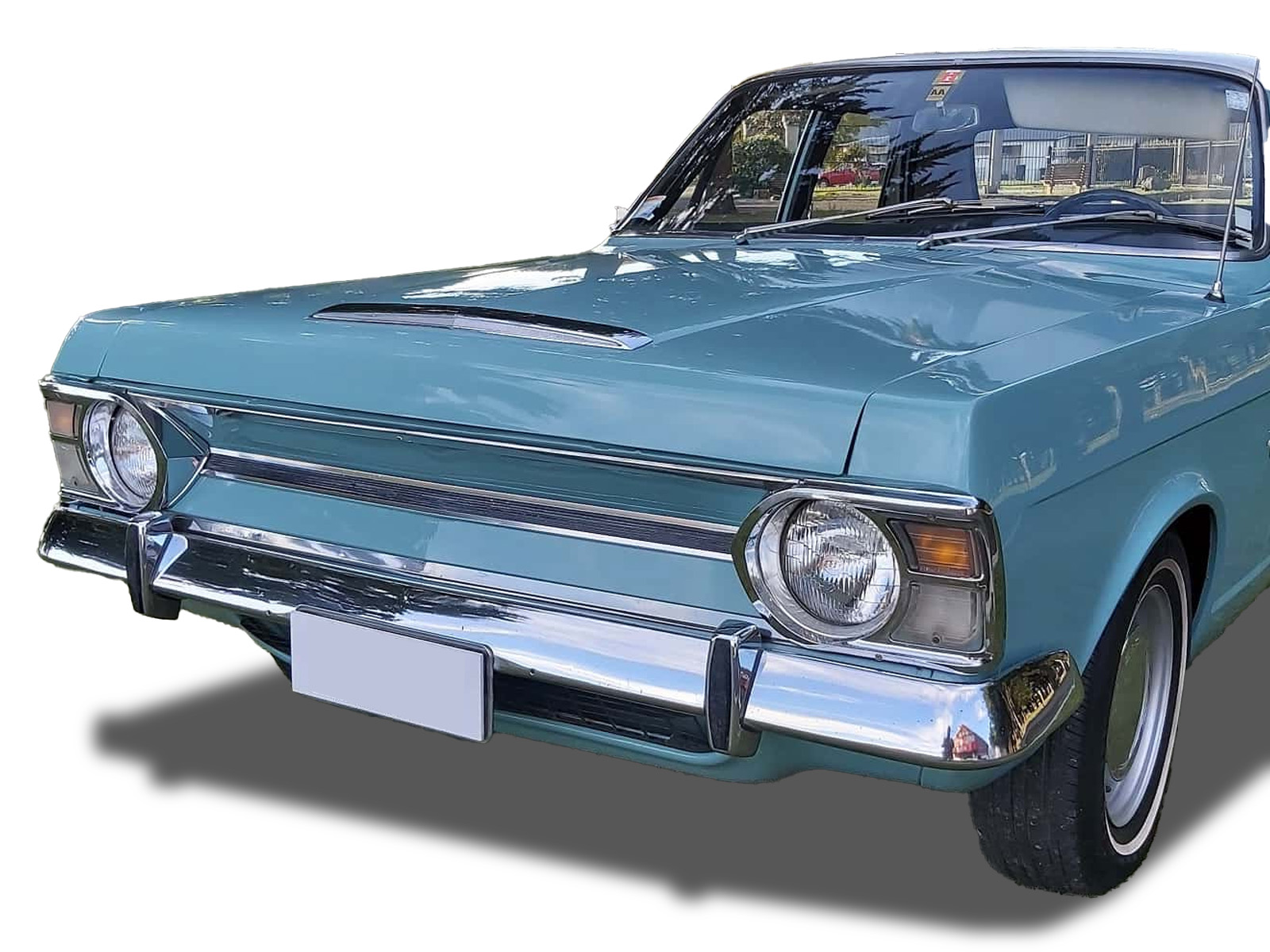
This 1970 Ford Zephyr is an early example of this, and I think it’s especially bold considering the era. All the air intake is below the bumper, and the area between the headlights is just an interesting panel that angles inward and has a full-width trim stripe between the lights. I really like this look, it’s very clean and crisp, and sets the Zephyr apart from so many other similar-looking hard-edged sedans of the era.
I wonder how much Corvair design influenced this look? I bet it had to have been a factor, to some degree?
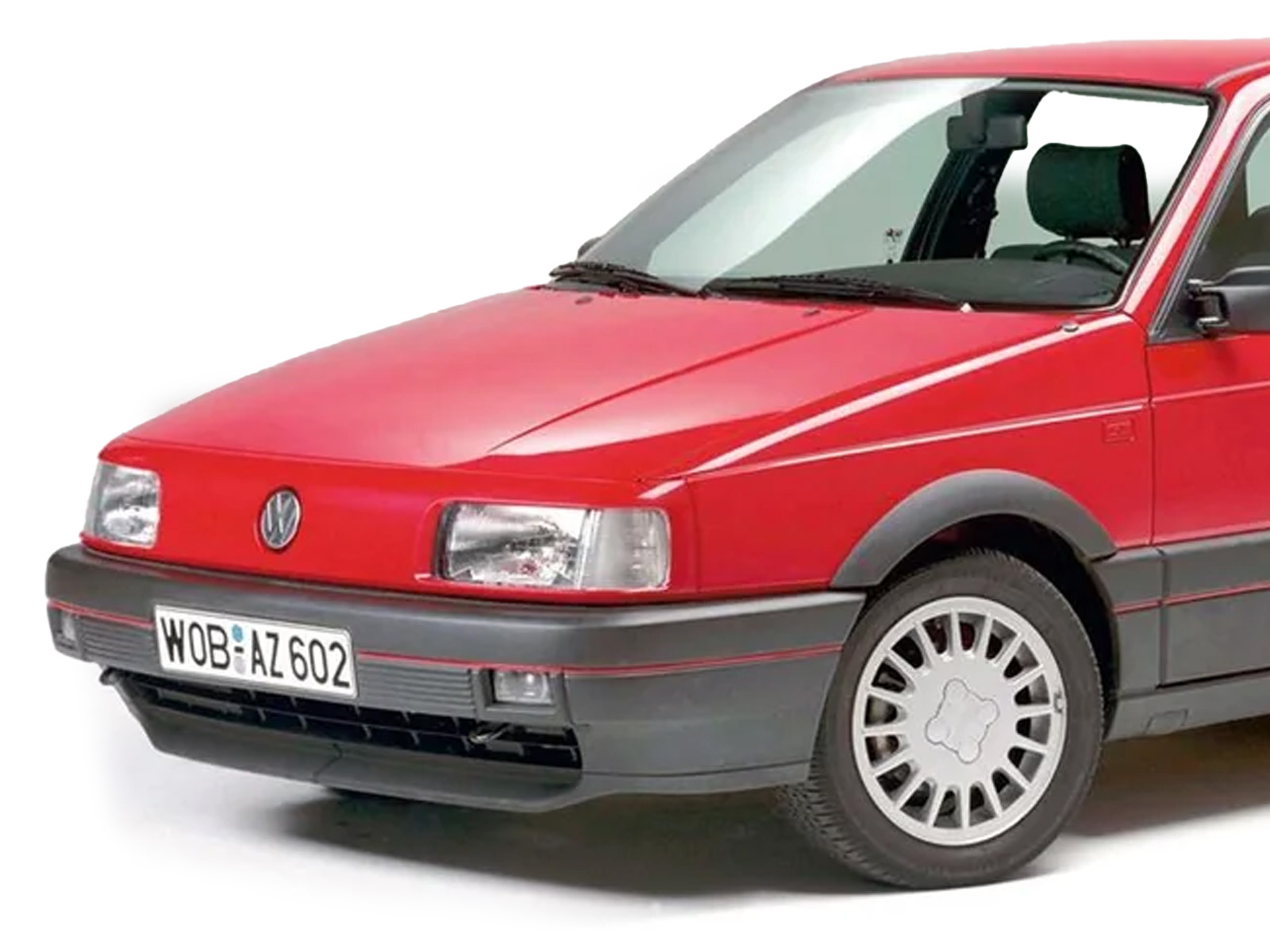
Let’s jump to the 1980s, and the B3 Volkswagen Passat. Of all companies, VW perhaps had more experience with grille-free front ends than almost anyone, thanks to their history with rear-engine, air-cooled engineering. Their water-cooled cars have always featured prominent black grilles up to this point, so this was a real departure.
The VW badge in the center allows air intake, but I think it’s localized enough to the badge itself that we can still count this as grille-less. I really love the clean look of this era of Passat – it feels modern and rational, like modernist architecture or a really well-designed room.
Of course, in 1993, VW backpedaled and stuck a grille on the front, which I think eliminated the essential charm of the car. This always happens with grille-less designs: pretty soon the companies lose their nerve, and shove unnecessary grilles on the cars.
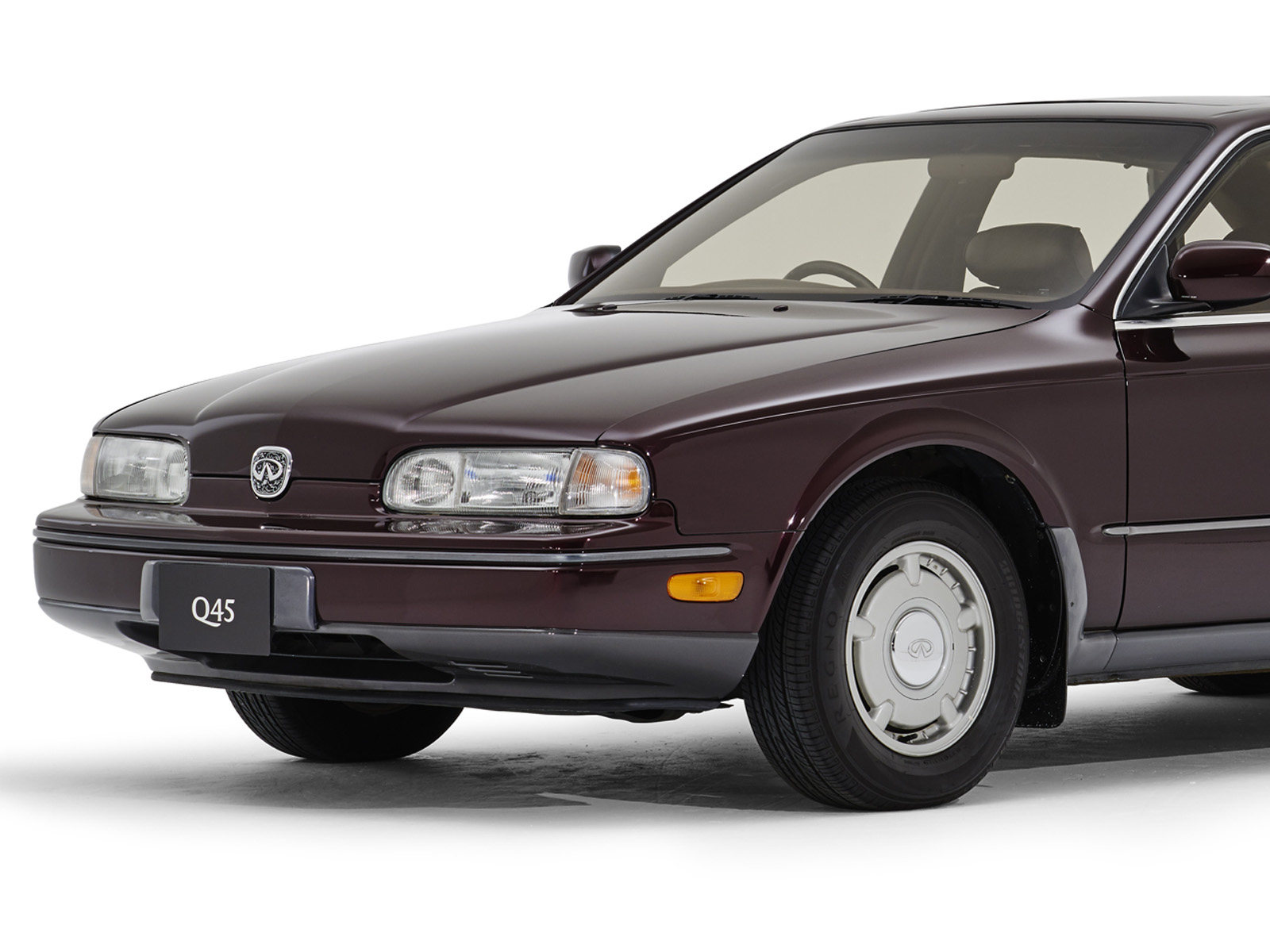 In 1989, Infiniti burst on the scene as Nissan’s brand for Fancy People, and it did so with some real verve, thanks to a grille-free front end that featured a large badge with ornate filagree in the background, an enameling technique known as cloisonné.
In 1989, Infiniti burst on the scene as Nissan’s brand for Fancy People, and it did so with some real verve, thanks to a grille-free front end that featured a large badge with ornate filagree in the background, an enameling technique known as cloisonné.
I actually love this badge; I have one in my basesment that I pulled from a junkyard.
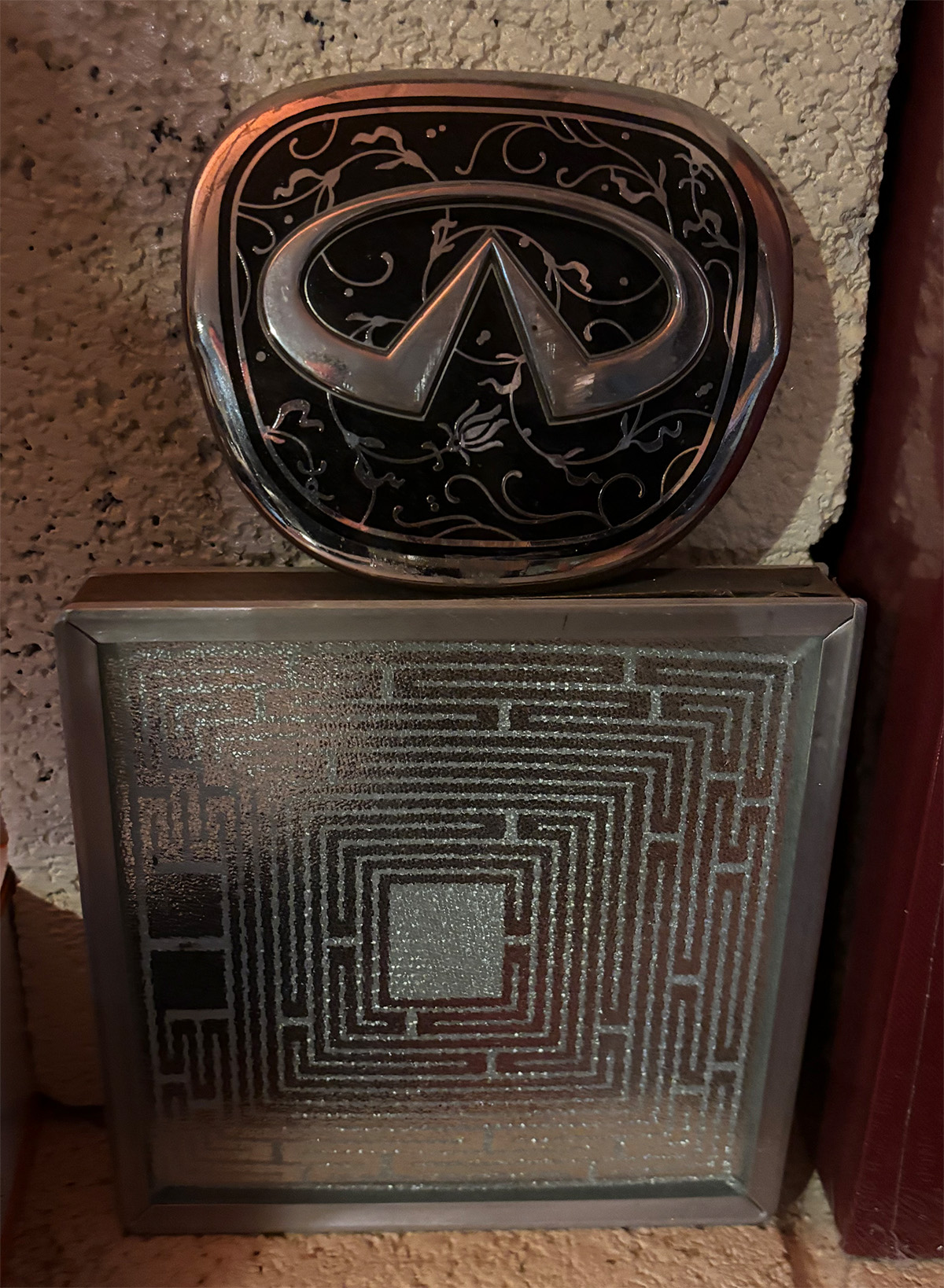
Infiniti backpedaled as well on the grille-less look with the G45’s 1994 facelift, which added a fussy chrome grille that, again, killed whatever novel character the car had.
For all of these grille-free designs, I think we see cars that embrace cleanliness and a more careful approach to adornment. I love seeing the smooth faces of cars like this, and I suppose one of the advantages of living in this encroaching EV era is that there are more and more cars being designed sans grille.
It’s not easy to design a car face without such a significant element, but that just makes it a bigger triumph when it works.
What do you think of these? I’m not alone here, am I? Am I?

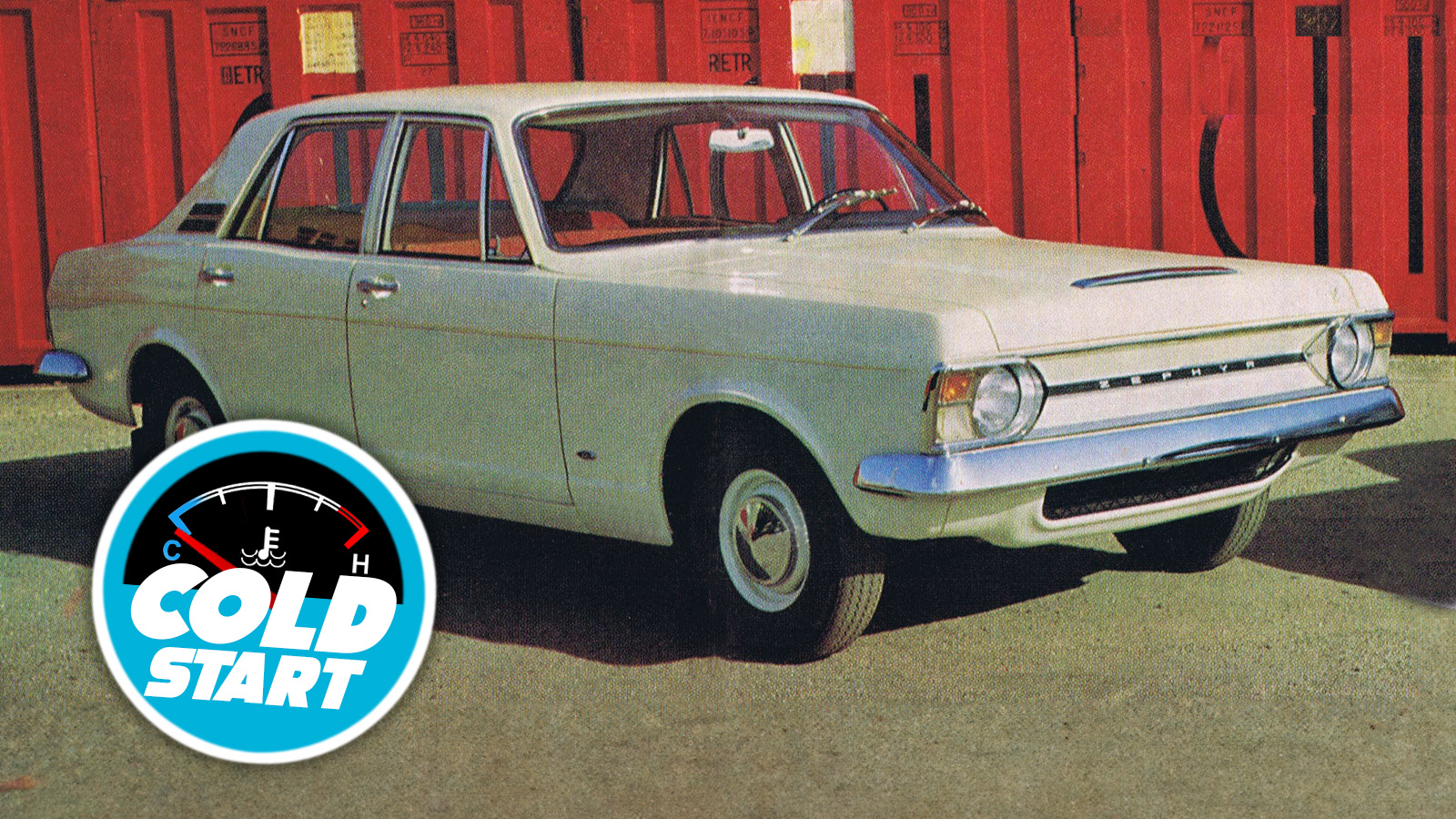







If there is an air intake above the bumper, that is a grill. That disqualifies both the Taurus and the Passat.
The first generations of the Citroën BX did not have a grille.
A grille gradually appeared on the sportier versions and then became widespread on the latest models.
Looks like it has already been mentioned, but the answer to your Taurus question is found in its sibling: The Sable had either no opening or a small mail slot under the light bar, depending on the year. Which begs the question, if the airflow wasn’t needed on the Mercury, why bother adding a hole on the nearly-identical Ford?
And speaking of light bar, the Sable was decades ahead of its time in that regard.
I don’t recall if my 1983 Starion had a top grille. Nice air dam on the bottom, though.
Look at all those examples of cars without grilles that still look good or at least tolerable, that EV manufactures uttery fail at managing.
The grille shape but no actual opening, like someone forgot to cut the hole out, just looks so terrible. Just because you don’t need a grille doesn’t mean you can’t put a chrome stip or somethoer kinda design to break up the blank expanse. Look how much better the early Model Ss looked.
But then I guess the grille shape without the hole shouts that it’s an EV, which is is what vain idiots who only buy EVs for the image care about.
Don’t overlook the pioneering 1949 Crosley Hot Shot. No grille, just an under-bumper air scoop. America’s first post-war sports car had a SOHC engine and disc brakes, and won the very first Sebring endurance race on index of performance.
https://www.hemmings.com/stories/the-little-car-that-could-1951-crosley-hotshot/
Does the NF Ford Fairlane count? (Don’t be decieved by its looks; the giant slab of chrome on the front is purely skeuomorphic)
or if that doesn’t count, the EF Falcon XR6 is equally as intruiging.
Re the XR6 EF Falcon
https://images.app.goo.gl/UdsCsRZSzb94oU6CA
Is that slit under the bonnet line and above the number plate functional ?
no, it’s also completely fake:
https://www.instagram.com/fordperformancesalvage/p/Cg5UhUuBWUP/?img_index=2
Does Civic EG count?
I was always bummed that Nissan didn’t go full-on CUE-X with the Q45. The CUE-X still looks contemporary today, 40 years after it was first shown.
I offer the third- and fourth-generation Pontiac Firebird.and Trans Am. For extra credit, the 1989 Trans Am GTA, an absolute beast wearing the heart of the Buick Grand National and having no visible grille above, in or below the grille. The GTA brings its cooling air from completely below the bumper .
https://www.carscoops.com/wp-content/uploads/2020/02/1989-pontiac-trans-am-gta-auction-48-1024×555.jpg
You could perhaps argue that the GTA wears a grille of sorts on its hood with a modest set of louvers…but those are exhausting air out.
And you missed some of the prettiest ones, ALL the Rx7s were grille-less designs, which as an owner is a massive pain when they put out so much heat
It was a brave look for the time and is maybe why the ‘upmarket’ Zodiac versions of the Zephyr had a dummy grille and twin headlights. Some markets for the Zephyr also had a dummy grille. Incidentally, behind the (grille?) panel, was the spare wheel. In addition to the 2.5 and 3 litre V6 versions, there was also a poverty pack V4 version, which must have looked hilarious in that engine bay!
Pedant spelling troll alert to those commenters using “grill”: “Grills” are for steaks, “grilles” are on cars.
Sorry, it one of those things to me.
“‘Le grille’? What the hell is that?
SATURN!
All Saturn S-series cars had no grills.
Pre facelift L-series had no grills.
Pre facelift Saturn VUEs had no grills.
Came here for this. Was not disappointed!
OK, but what about cars like the late 2nd gen Firebird where the intake isn’t above or below but IN the bumper?
Most Tatras managed to look pretty cool without grilles.
Most Tatras (actually all Tatras) are rear-engined.
Infiniti backpedaled as well on the grille-less look with the G45’s 1994 facelift, which added a fussy chrome grille that, again, killed whatever novel character the car had.
This is a perfect take, that nose job was horrible.
What about the 1st gen Sable?
1988 Mercury Sable GS Sedan in Medium Cabernet, Front Left, 07-08-2023 – Mercury Sable – Wikipedia
Rover SD1 has small slit in the middle. The 1982 facelift expanded the slit to the sides.
The first generation (1986-1988) Taurus also had a gap below the headlights and center plate and the bumper. Unadorned, but definitely contributed to airflow to the radiator.
The 1989-1991 had a slight facelift that included solid plastic and chrome strip below the headlights, and a smaller opening below the center plate.
SHO had a defined opening though.
I’m with Torch and let’s called it semi-grilleless!
Even today, what a stunning design, especially the timeless wagon (IMHO)
Ford also sold the Taurus with a police package that came with special grille with little horizontal slits that allowed more air flow. I always thought those looked better.
3rd Gen Honda Prelude
Mitsubishi 3000GT/Dodge Stealth
Every RX7 ever built
Pre-facelift Lexus SC300/400/Toyota Soarer
Mitsubishi FTO
Ferrari 400
Ferrari Daytona
Ferrari 550i
Ferrari Roma
I’m glad some EVs are bringing this back. More utilitarian and simplistic car designs!
Where do the fist and second generation Firebirds and the 2968 Pontiac GTO fit in? Or the 1970 Dodge Super Bee and Coronet?
Seems to be a whole bumper surrounds the grill and the headlights category.
My first look at my first car. So close.
https://silodrome.com/wp-content/uploads/2020/10/Triumph-TR8-Nose-2048×1368.jpg